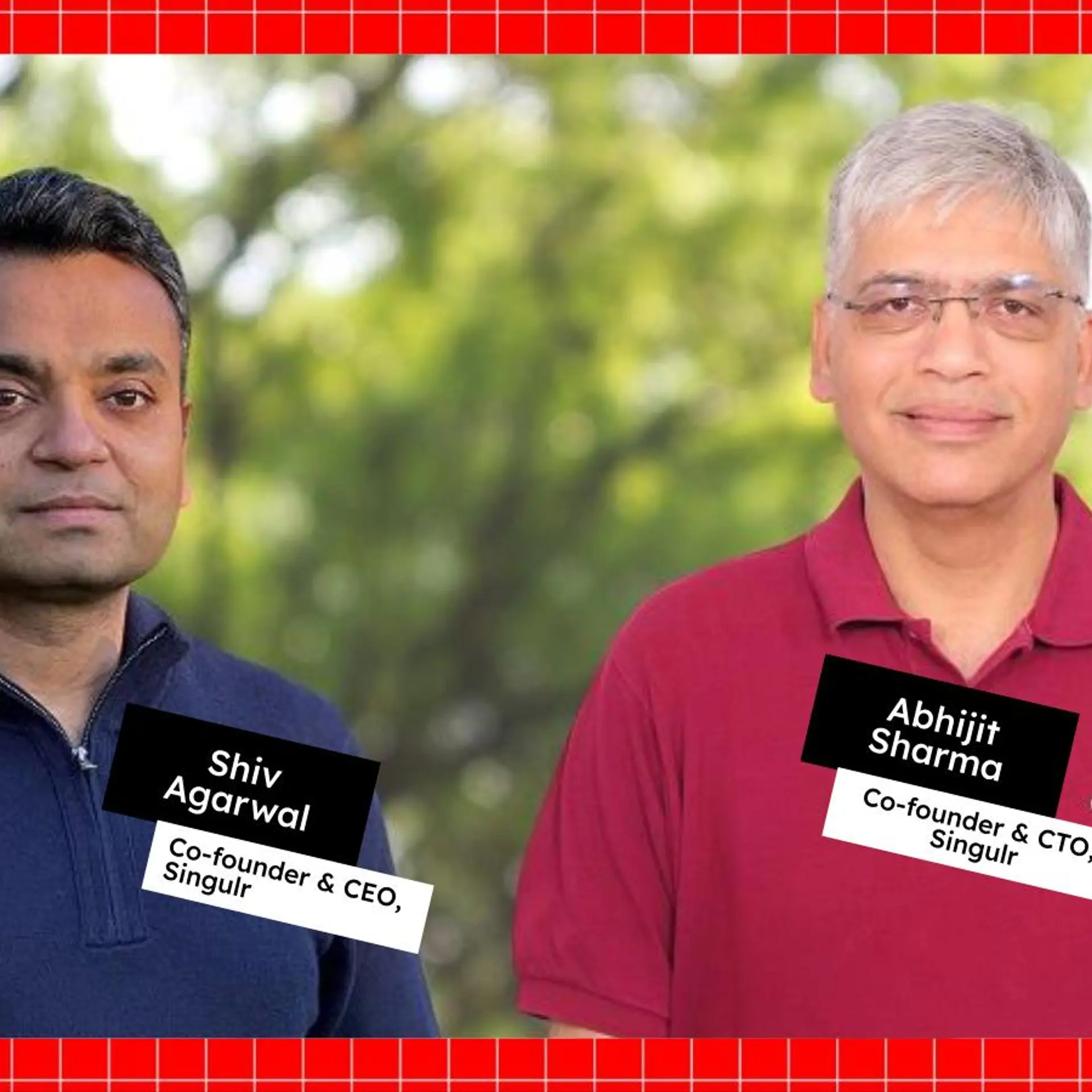Decoding the art of selling: Why face-to-face communication is still relevant in digital India
At a time when emerging technologies, the likes of IoT, AI and blockchain, are changing the world, what does it take to transform and build a company that is connected? How relevant is it to establish personal connections in a digital world? What is the role of technology?
Exploring these and other questions were Kamal Kanth, Regional Sales Director, Salesforce
#1 The personal touch is still relevant in a digital age
Casey Clegg kicked off the discussion with an interesting contradiction. He said, “It’s not enough to start with a website and hope that people will come and understand the value of your product. Even before you begin exploring the different digital tools that are available for businesses and startups today, entrepreneurs must understand that it is very important to use face-to-face conversations to attract customers. He added, “One thing you should understand is that companies don’t buy a product, but people do. So when you try selling stating that this product will help your company, it only matters partially. What really matters is if you are able to demonstrate how the product will help him or her.”
Kamal took the thought further and said, “Founders must understand that they are selling to a person. They are selling to a persona. They are selling it to a personality trait. And, that’s why it is important to understand what makes our product appealing to them. If you know that, you can build success.”
#2 A founder is the first and most important salesperson
Shashi Maurya, who was an entrepreneur in his earlier innings, shared learnings from his startup journey. “Having led one successful venture and one which didn’t succeed, the key learning has been that until you reach your first 100 customers, the founder has to be the one who is doing the selling. You have to do it yourself, because the passion, the vision that you have, will only reflect in you in the early days.” Casey agreed and went to elaborate. “As a founder, you are not only the first salesperson but also the most important salesperson. The other big reason why it is important not to push that responsibility off onto someone is that you get your best market feedback when you interact with your potential customers. These interactions will help you understand how you need to evolve your product, how to develop your message, what is the content you should be pushing. And without that touchpoint, it's very hard to build a company that's going to speak the language your customers want to hear.”

#3 Segment your customers while driving your communication
Shashi and Casey also highlighted why startups must tailor their communication for effective customer engagement. Shashi said, “Even before you sell, build your communication channels or engage with your customers, you have to segment your customers.”
Casey added, “When we say segmenting your customer is important, it is not just in terms of who they are, but also how you want to engage with them. For instance, during one of my previous stints, developers were our key target. But, we didn’t look at hard sell. We wanted to engage with them by educating them and thereby showcase the value of our product. To put it simply, understanding who your customers are, who the users are and what they actually want from your product is just as important as understanding how your product helps them.”
#4 Contact your customer in the first 24 hours of getting a lead to boost chances of conversion
Today 80 billion messages are being exchanged every day and the average attention span of the customer stands at just three minutes. Given this context, Kamal shared an interesting tip. “If you get a customer lead, then you have to get in touch with that customer within 24 hours. Anything after that, your conversion rate gets reduced to 10 per cent or less. In spite of investing in digital channels, be it on LinkedIn or Google Ads, if you are not converting the lead by speed, then the entire effort is futile.”
Shashi validated this by saying, “Today, there are a number of tools that give you insights and notifications that let you know when a customer has opened your email. And, the best conversions and conversations I have had are when I have been able to connect with prospective customers is when I have called them while they had my email right in front of them.”
#5 Reach out to your customers across all mediums, but time it well.
The panellists pointed out the importance of connecting with customers who have either turned cold or haven’t responded by reaching out to them in a phased manner through different digital mediums. Kamal shared, “One thing that startup founders need to do is reach out to the customers on all mediums, on e-mail, SMS, WhatsApp, LinkedIn, phone call, every channel that is available.” When asked if this would overwhelm the customer, Kamal disagreed.. He pointed out that every individual has a preference and you can’t predict which medium would work for whom. . “But, this is not to say that you have to fire your ammunition all at once. Instead, you have to be intelligent and diligent enough to phase them out in a periodic manner and keep a track.”
Casey pointed out that on an average, it takes seven touches to get a customer to respond. “Which means some will take anywhere between 15 touches, some might just take three, the important thing is not to give up if you don’t any response in the initial attempts.”
#6 Sell your meeting, not your product.
“When a customer responds on email, don’t respond saying you will get in touch over a call to fix up a meeting. Instead, pick up your phone right away, call and fix up an appointment and keep the phone down. Get the call done in not more than 30 seconds. Don’t pitch in that first call. Also, when you are asking for an appointment, ask for just 30 minutes. And, you will see it works,” said Kamal, sharing a hands-on practical suggestion. Casey agreed and said, “Be it in your WhatsApp message or e-mail, you should sell a discussion and not your product. Because it is during the discussion that you can convincingly talk to them and sell your product.”
The panellists highlighted the flipside of selling the product in the introductory mail or the first call. Kamal pointed out, “If you start selling your product in your call or mail, you will be cut short with an ask to share marketing collateral and you know what happens after that. That mail or collateral never gets read for three straight months, if not more.”
#7 When you are selling to enterprise customers, reach out to multiple stakeholders
Shashi shared an interesting insight for startups wanting to crack the success code with enterprises. He shared, “ What has worked for me is reaching out to multiple stakeholders in the enterprise. For this, you should undertake social modelling of these stakeholders at an organisational level. And, when you are reaching out, make sure your communication is personalised and contextual for each of those stakeholders. For a product or engineer lead, you could look at highlight the technical features, for the marketing team you could highlight the impact your product will create from a business point of view. “
#8 Pick the right customer
The panellists called out the need to undertake due diligence when reaching out to potential customers. Highlighting that a startup in its early stages should not just look at onboarding customers but the right customers, Kamal shared, “It’s not uncommon to find customers who don’t honour payments. Engaging with such clients can get tricky. That’s why even before you reach out to the customer, you need to learn about who they are. Find out facts like who was the previous vendor they had engaged with, do they pay their employees on time, are there any issues reported publicly, etc.. Also, another observation is that it is so hard to onboard a customer that founders tend to get emotional about it. It’s time to put an end to it.”
#9 Ask for references or connects from a customer when they ask for discounts
Today, all startups will tell you that most customers ask for a discount. And, that puts them in a tough spot. If they don’t give discounts, the customer may not sign up; if they do, that sets a precedent or lowers their profit margin, both of which are not ideal. However, Kamal shared an interesting solution. He said, “When customers ask for a discount, give them a discount, but in return ask for three references. And, this will work brilliantly in your advantage.”
These interesting, honest and practical insights drawn from years of experience resonated with the audience was evident from the hearty applause and appreciation the panelists received.
YourStory's annual extravaganza TechSparks brings together the best and the brightest from the startup ecosystem, corporate world, policymakers and, of course, the investor community. Over the past decade, TechSparks has grown to become India's most loved tech and startup platform for knowledge sharing and networking. A big thank you for all your support over the years and a big shoutout to our sponsors









